
The Medina of Meknès
Wandering Through the Medina of Meknès
On an earlier page I had found my way into the
medina,
the old town of Meknès, to
find my guesthouse.
The medina and the kasbah of Meknès are enclosed
within a shared outer wall.
However, the Sultan Moulay Isma'il felt that the
inhabitants of his capital city were a potential threat,
so he built further massive walls
to separate sections of the city internally.
Moroccan cities have a medina dating from centuries
in the past,
and a ville nouvelle established during the
French Protectorate and undergoing renovation and extension
every since.
It can be jarring, a walk of twenty minutes
can transport you across centuries.
Some people live, work, and otherwise spend almost all
their time within the ancient medina,
or
within the modern ville nouvelle.
But there are people who live in the medina and
work in the ville nouvelle,
and people who do the opposite.
Here is a day I spent entirely within the ancient medina.
Rue Dar Smem is a major street running east-west, from close to the train station in the ville nouvelle and then along the walls along the northwest perimeter of the kasbah, separating it from the medina. A post office, a few banks, several cafés, and some hotels like the Hotel Agadir and the Regina Hotel are located along it.
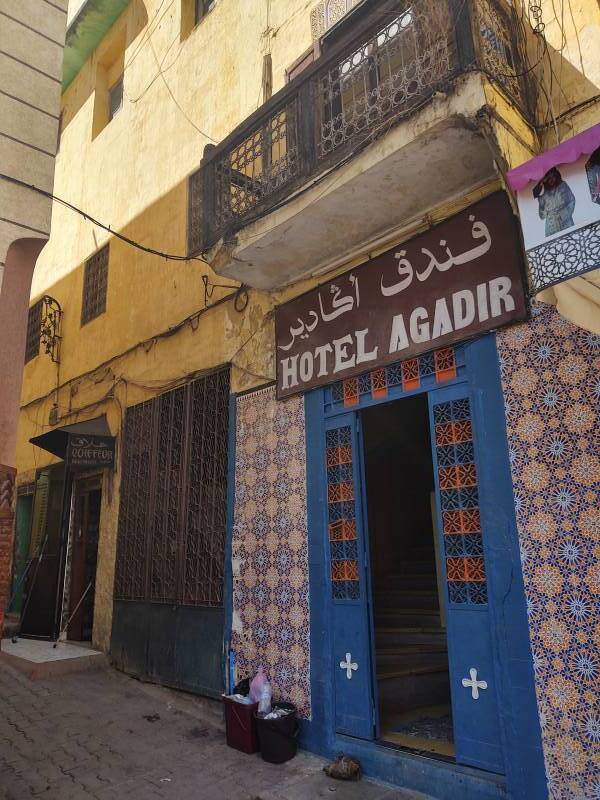
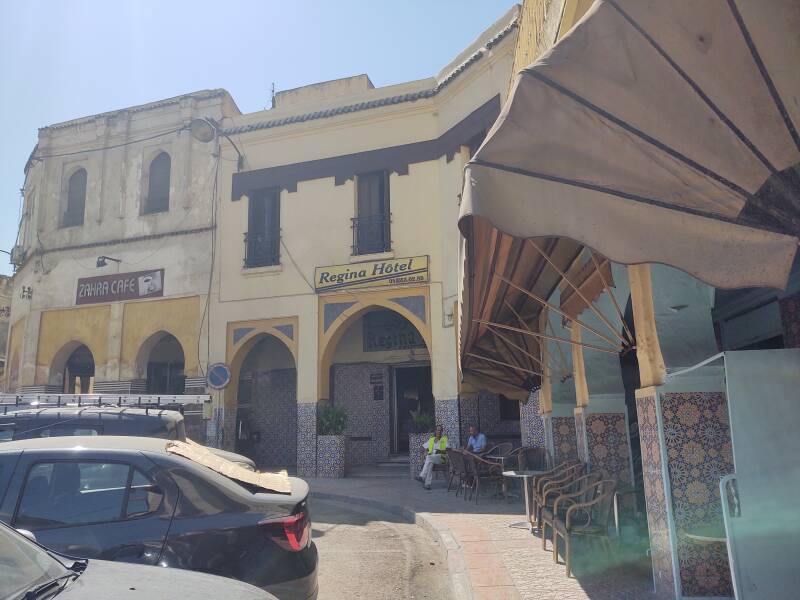
From here I needed to simply pick a gateway into the medina and see where it would lead me.
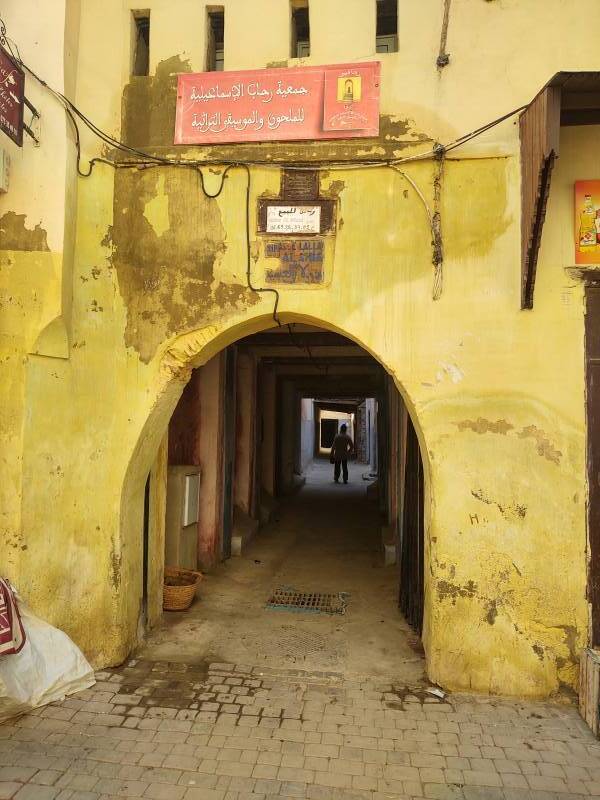
The Sultan Abu Inan Faris of the Marinid dynasty, described on this sign as Abou Inane el-Marini, "the Marinid" as he was of that dynasty, followed his father to the throne in 1348. Ten years later he was strangled by his own vizier. He wasn't the only Moroccan Sultan to suffer that fate. During his 1348–1358 rule he founded this institution, Dar Chrifat, a psychiatric bimaristan or hospital.
I am from the U.S.A., where there is almost no public mental health care. Morocco had mental health care in the mid 14th century, over a century before any Europeans other than the Norse realized that North America even existed. I am impressed.
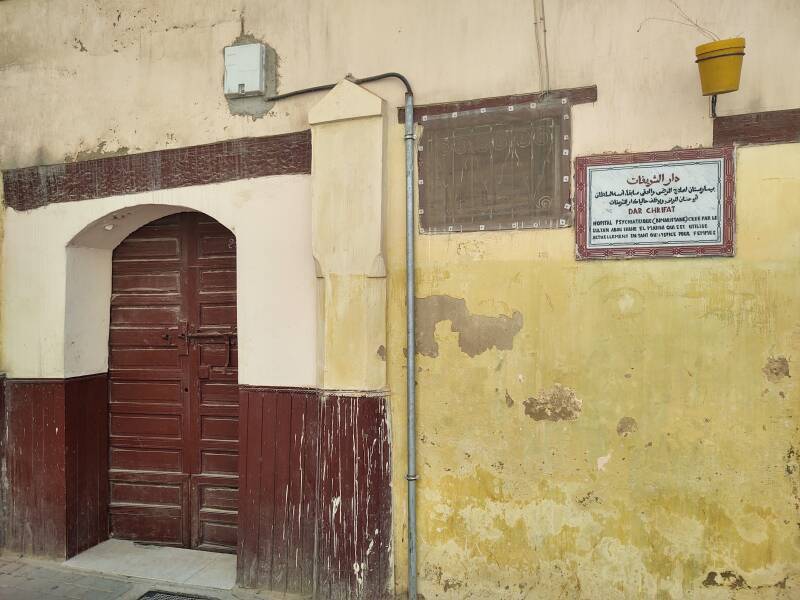
There are a lot of elaborate doorways in this collection of pictures. The medina is filled with beautifully decorated doorways.

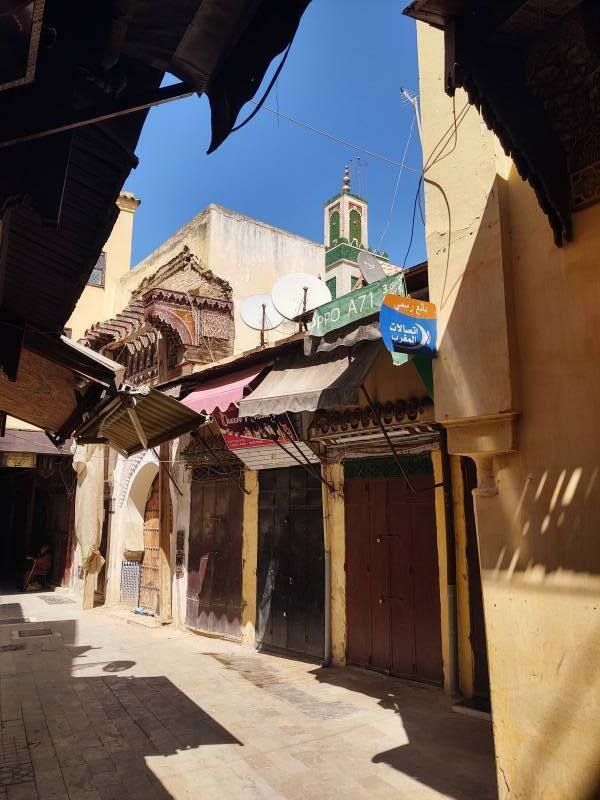
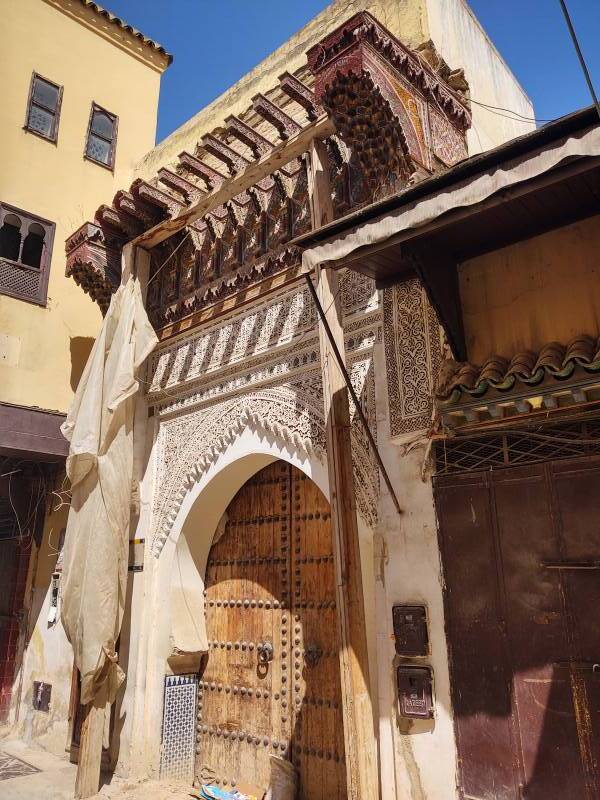
The city was founded by the Almoravids in the 11th century as a military settlement. The name and original settlement come from the Miknasa, a Berber tribe who controlled this region as early as the 8th century.
The Grand Mosque of Meknès is believed to have been built by the Almoravids in the 12th century. It was significantly expanded in the early 1200s under the caliph Muhammad al-Nasir. Then during the 14th century, under the Marini dynasty, it underwent further renovations and expansions. Multiple madrassas and a library were added to the complex.
Below is the view down a covered souq leading to one of the main doors into the Grand Mosque.
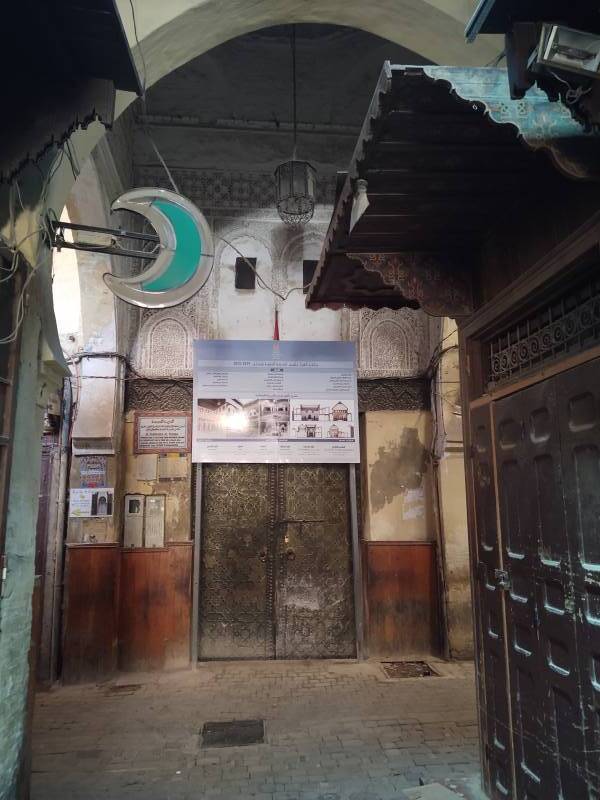
Several of the passages immediately around the Grand Mosque are covered.
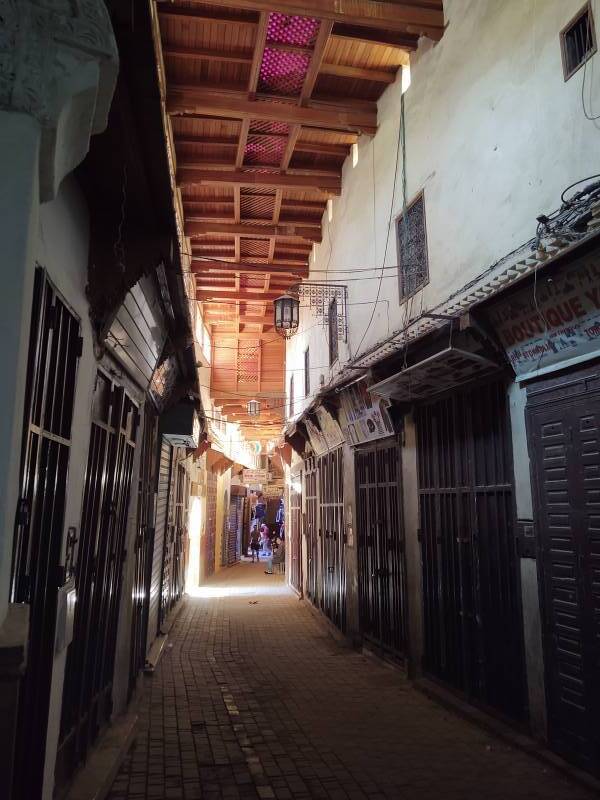
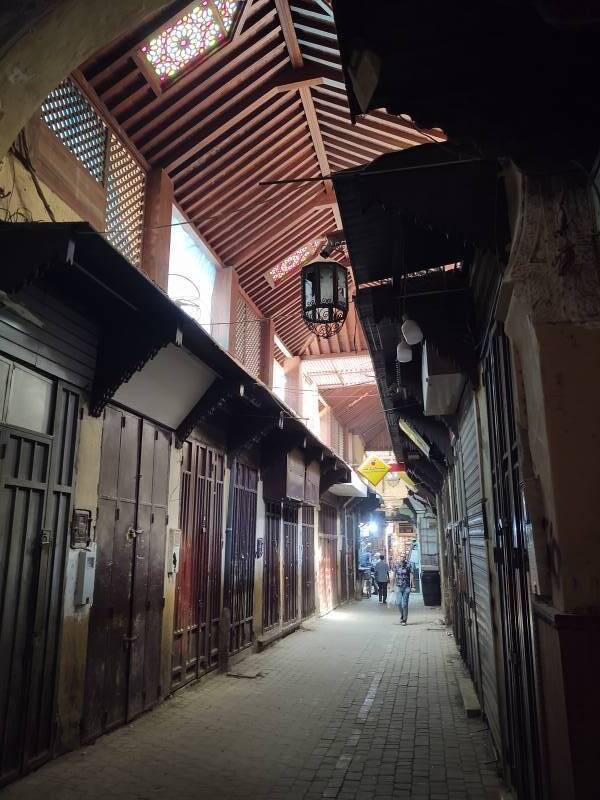
The distinction between "indoors" and "outdoors" becomes vague within the medina. You might be outside a dar, a house or large building, but still within a completely enclosed space, out of the weather.

The minaret of the Grand Mosque is visible from some spots within the medina.


I kept wandering north through the lanes of the medina.


It was early Friday afternoon, so several men were on their way back to their home or business after the mid-day prayer.
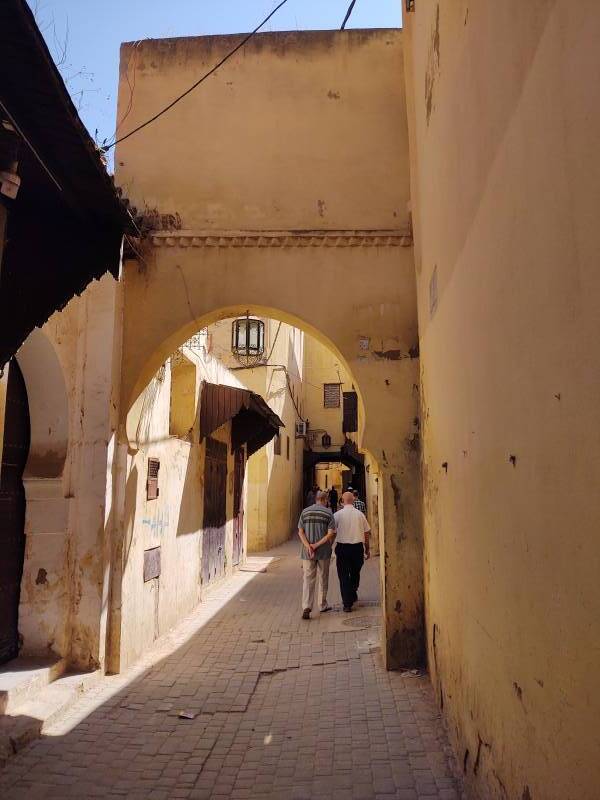

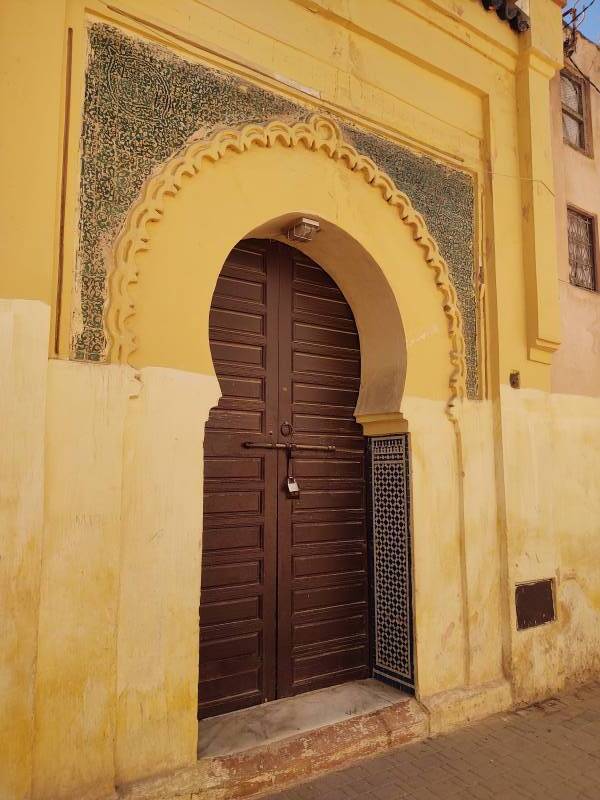
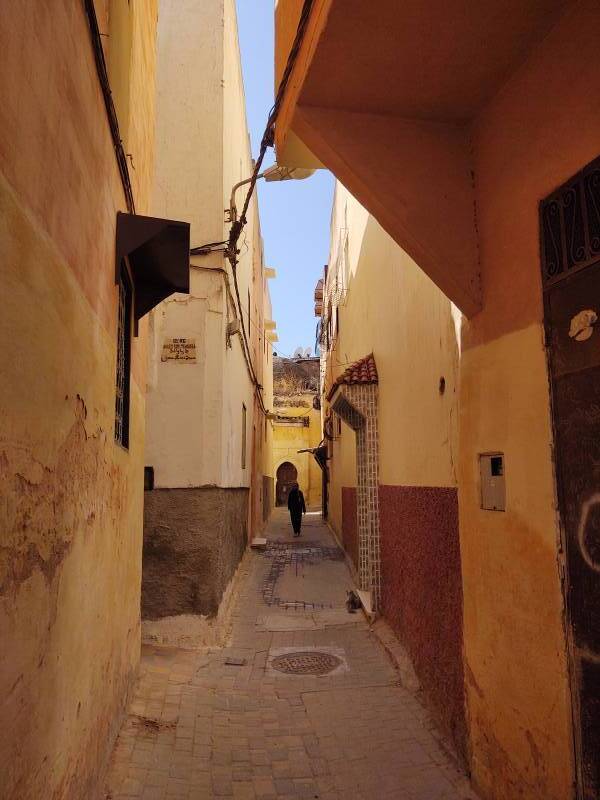

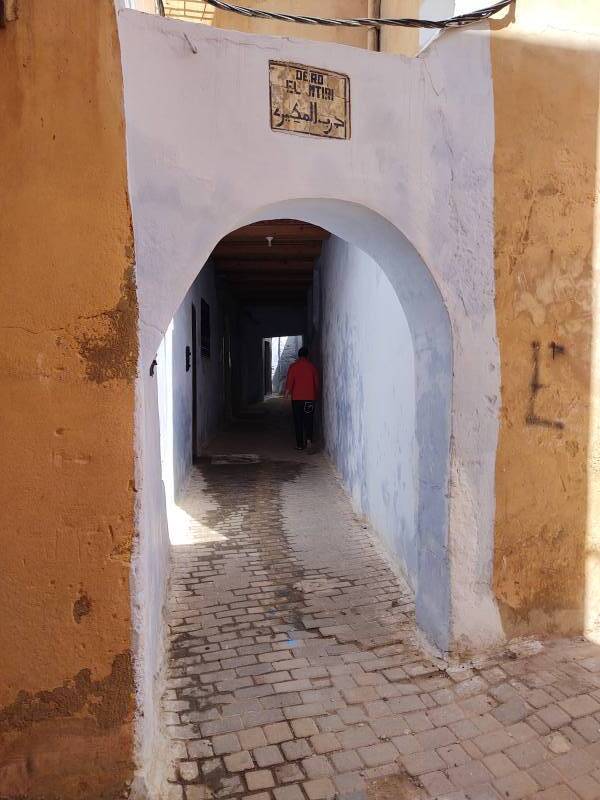

I was soon approaching the Bab al-Bard'iyim Mosque near the northern tip of the medina.
The mosque was completed in 1709, built on the orders of Khnata bent Bakkar, a wife of Moulay Isma'il and Morocco's first female vizier or minister.
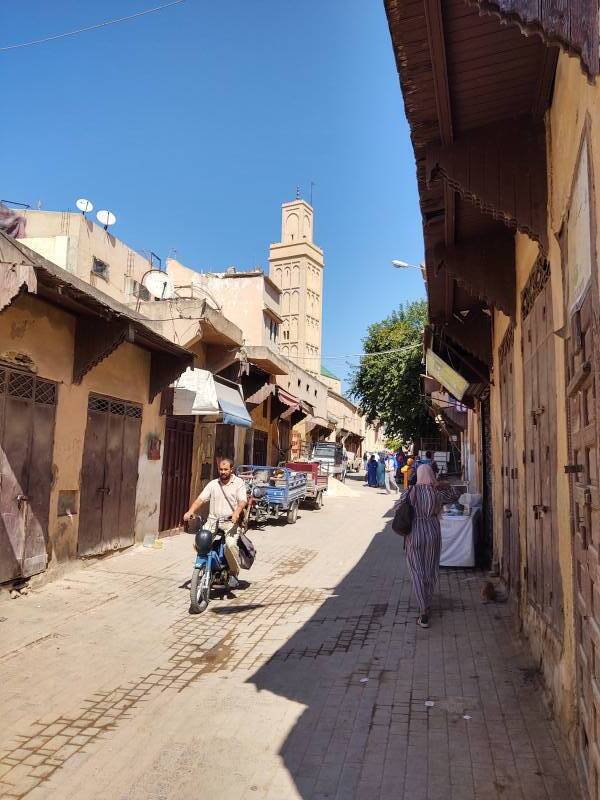
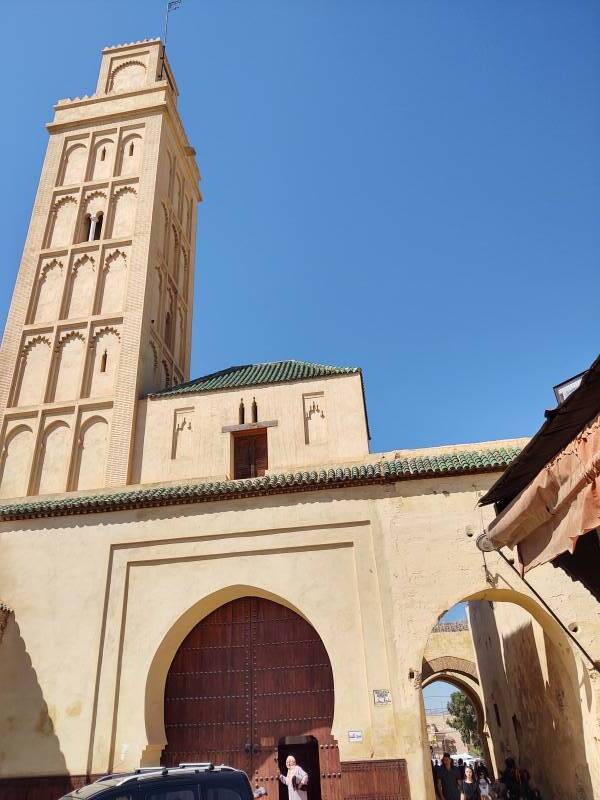
Bab al-Barda'in was one of the original 11th century gates of the city. Moulay Isma'il extended the medina walls, adding this outer wall and gate to the northern edge of the medina. This gate is a simple straight passage flanked by large bastion towers.


Returning to the medina I passed first through Bab al-Barda'in and then through the older, now inner, gate.
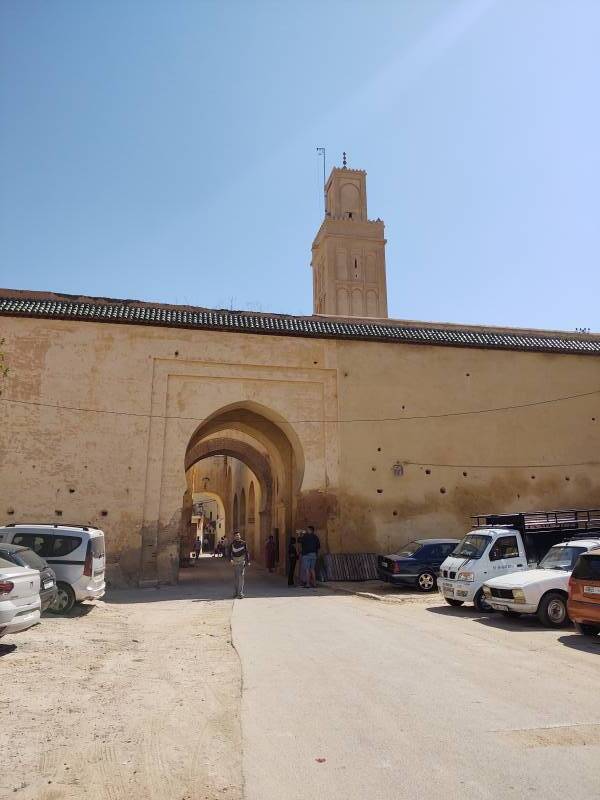
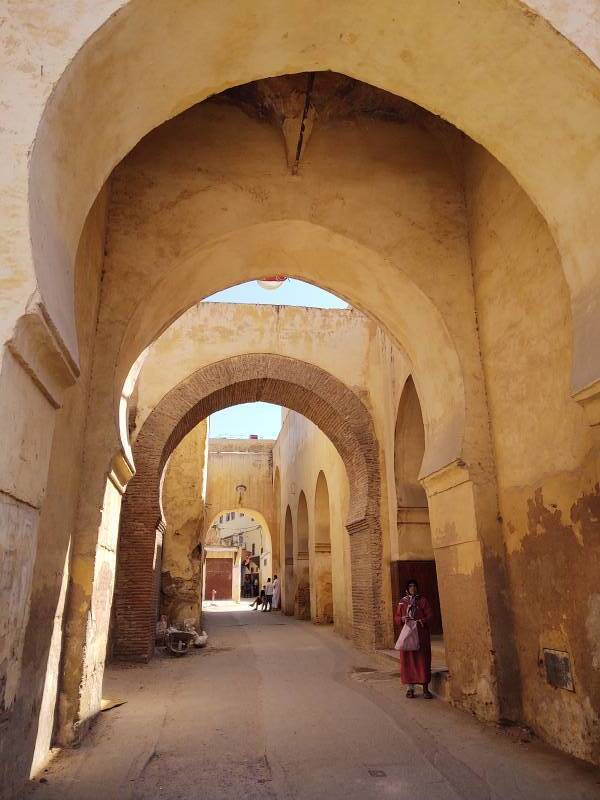
Then I continued southwest along a different path.
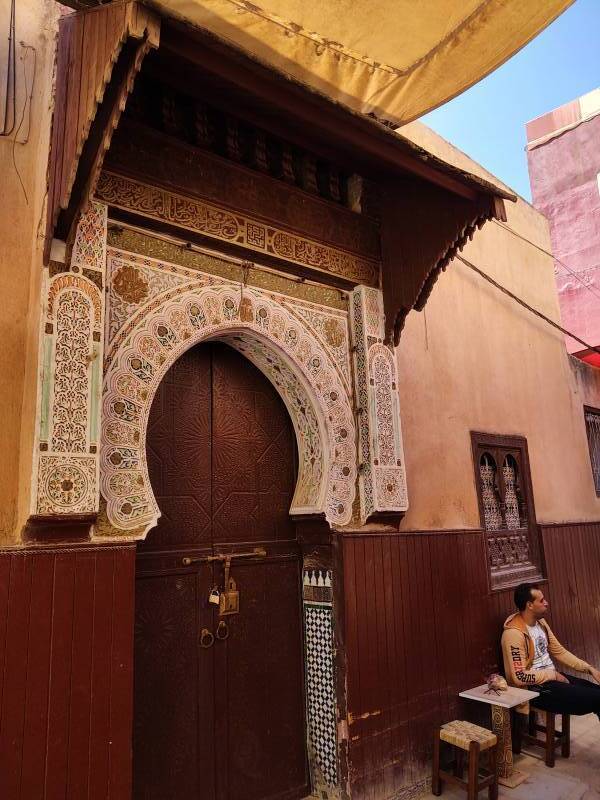






This eventually led me to another elaborate door into the Grand Mosque complex.
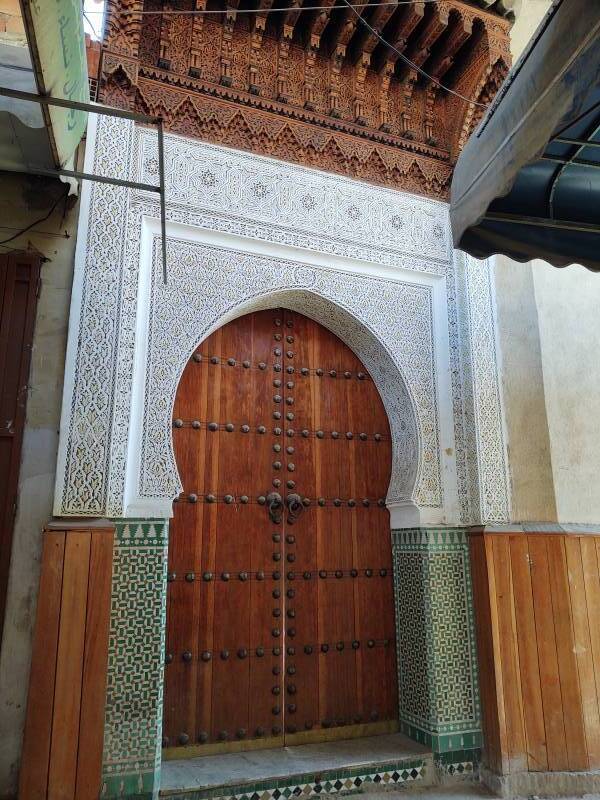
Exploring west from there led me into the mellah, the Jewish section of the medina. And from there, into some open market streets just off Place el-Hedim.

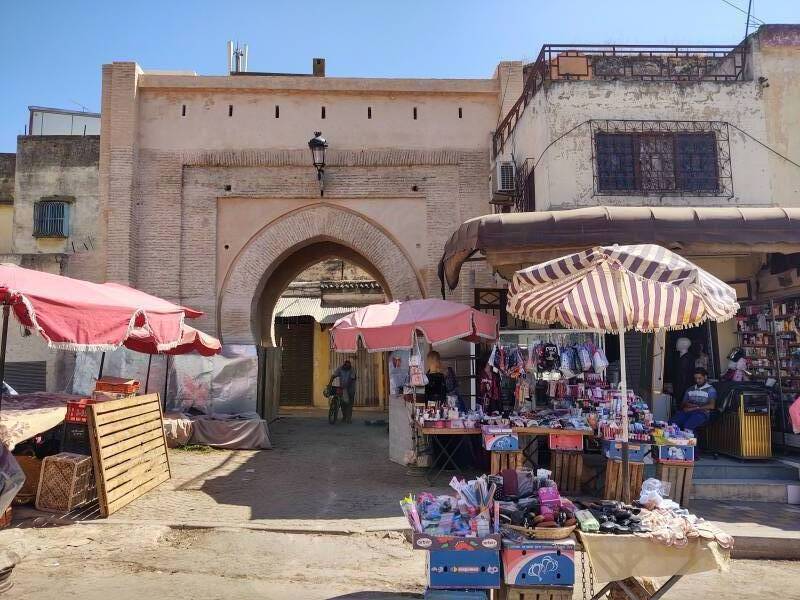
Next, I would visit the Dar Jama'i music museum at the north edge of Place el-Hedim.
dar means "house".